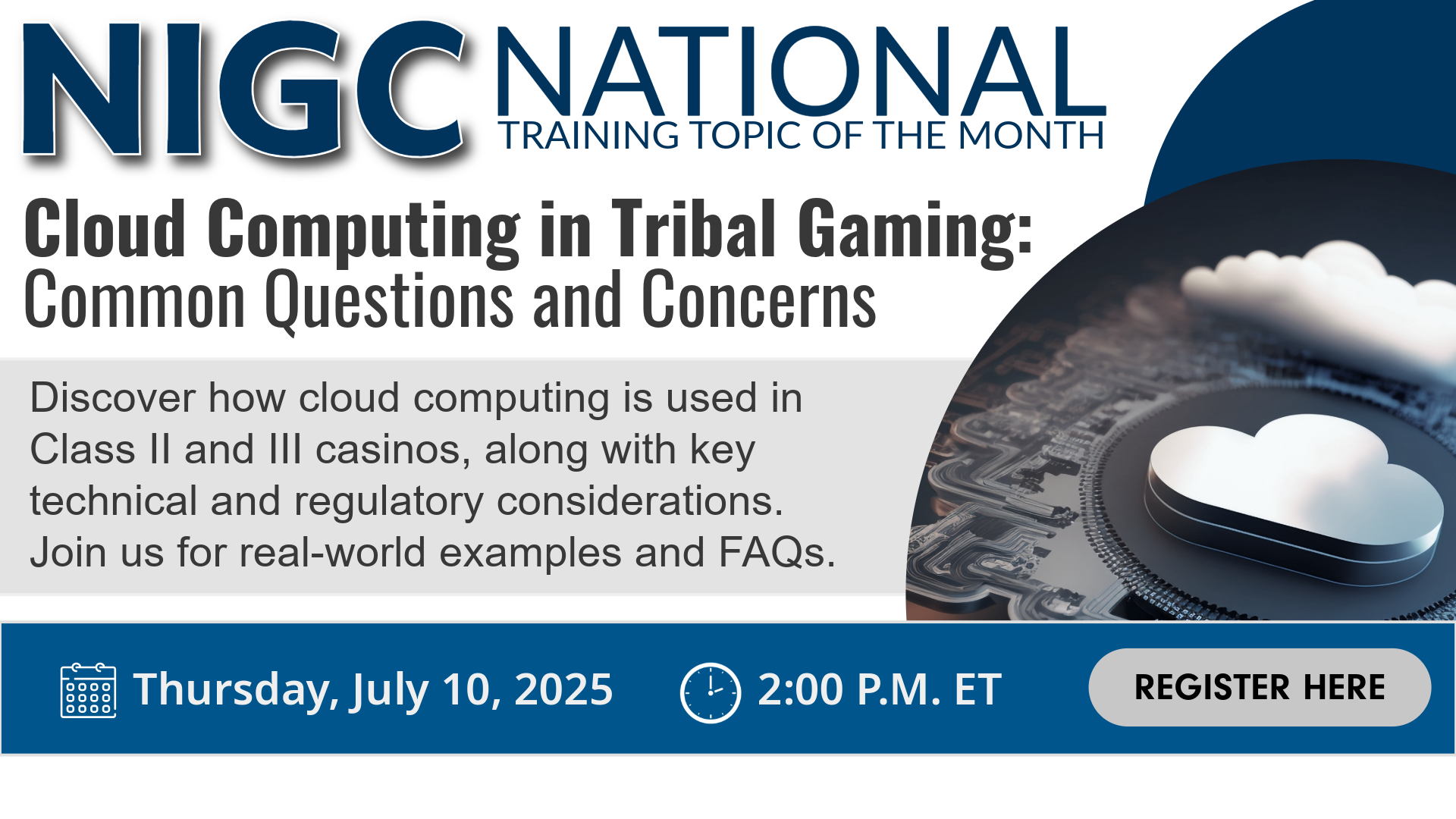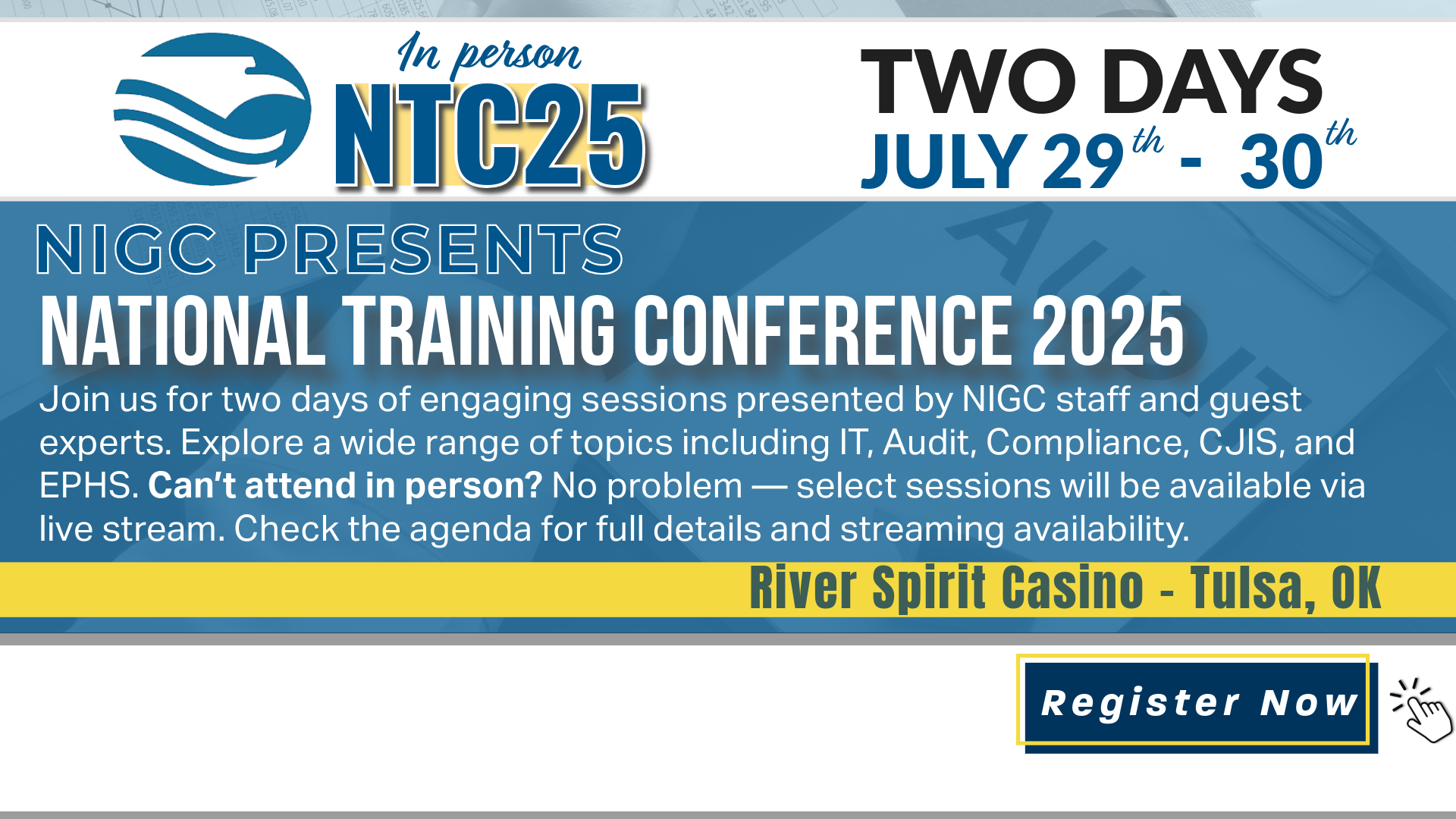| Date | Publication Number | Title | Topic |
|---|---|---|---|
| 09/02/1998 | No. 1998-3 | Requirement to Submit Facility Licenses |
Requirement to Submit Facility Licenses
Date: September 2, 1998
Subject: Requirement to Submit Facility Licenses
Sections 522.4(6) and 522.6(b) of the National Indian Gaming Commission (NIGC) regulations require Tribes to issue a separate license to each place, facility, or location on Indian lands where Class II or Class III gaming is played. This Bulletin is to advise that effective immediately, a copy of each facility license must be submitted to the NIGC. Such a submission will help insure that each Tribe's compliance status with respect to facility licenses is correctly shown on the NIGC'S Compliance Report.
Although NIGC regulations do not specify license requirements, it is recommended that the facility license include the name of the Tribe, the name and address of the facility, the type of gaming allowed (Class II and/or Class III) and the effective date. The license should bear the signature of the appropriate Tribal governmental official responsible for issuing the license. It is also recommended that the license contain the name and phone number of the Tribal governmental agency responsible for the regulation of the gaming operation. The facility license should be prominently displayed in the gaming operation so that it can be easily viewed by patrons.
Non-expiring or indefinite licenses are permitted. Please remember, however, that if the facility license is renewable, it is the Tribe's responsibility to submit the renewed license to the NIGC.
If you have any questions regarding the issuance of facility licenses, please contact either your Field Investigator or Ms. Linda S. Sumner at (202) 632-7003.
Footnotes for various bulletins:
- Except as noted in footnotes, the same requirements apply for a class III gaming ordinance.
- For class III gaming, the appropriate reference is 25 U.S.C. Section 2703(8).
- If a tribe elects to allow individually owned gaming, it must authorize such gaming in its ordinance according to 25 C.F.R §§ 522.10 and 522.11.
- Guidelines to Govern the Review and Approval of Per Capita Payments, memorandum to All Area Directors from the Assistant Secretary - Indian Affairs, December 21, 1992.
- To the extent any additional definitions deal with provisions of the IGRA, those definitions must be consistent with the IGRA and the regulations of the National Indian Gaming Commission.
- A tribe may expand this definition, but not limit it.
- Unless a tribal-state compact provides that a state has exclusive jurisdiction with respect to conducting background investigations and issuing licenses, the background investigation provisions apply to class III gaming.
- In June 1993, the NIGC circulated a Model Ordinance and Description of Procedures for Conducting Background Investigations. The NIGC encourages tribes to use this Description of Procedures when formulating their own procedures.
- An Indian tribe would be authorized to donate all or part of the sixty percent (60%) of net revenues to the charitable organization that conducted the gaming activity. See, 25 U.S.C. § 2710(b)(2)(B)(iv).
- This amount may be other than $33,750 ($67,500 x .50) because the assessable gross revenues may have been adjusted, the fee rate may have changed, a credit for the previous year's overpayment may have been received, or a clerical error may have been discovered.










